The American White Pelican (Pelecanus erythrorhynchos) is a huge bird! With an 8 to 9 1/2 foot wingspan and weighing in at up to 30 pounds, it rivals the California Condor for size and weight. They occur mainly in western and southern portions of North America, breeding inland in colonies on remote islands and wintering along warm southern coasts1.
Large flocks of these amazing birds are sometimes seen gracefully flying overhead in formation or soaring high on thermals.
In breeding plumage, adult American White Pelicans have a distinct “centerboard” or “horn” on the ridge of their bill. I was lucky enough to catch this photo of an adult in flight at the Sacramento National Wildlife Refuge back in February showing the horn and their distinctive black and white plumage.
Two weekends ago, I took a little jaunt to Eagle Lake hoping to see the complete courtship display of the Western and Clark’s Grebes but alas, I was too late. They are already nesting. I did see several American White Pelicans though, including this immature bird (click on photos for full sized images).
The immature bird has a dusky wash on the head, neck and wings, fading to white by late summer or fall.
Unlike the Brown Pelican, the American White Pelican scoops up fish while swimming.
They begin feeding by dipping that huge bill into the water and scooping prey into their pouch, water flowing out of the pouch as they raise it back up to horizontal.
Then they raise their heads up to swallow their catch.
This youngster obviously has something pretty big in there
As the swallowing commences the pouch deflates again …
until the last of it goes down the gullet.
Apparently, nocturnal feeding is common during breeding season (but not during the winter) requiring the birds to feel the prey as it contacts the beak. During the day prey is probably located by sight.
One interesting fact about the American White Pelican is that they sometimes forage in cooperative flocks, driving fish toward the shore where they are more easily caught. I found this great video showing the cooperative foraging activity plus it shows the pelican in flight, a beautiful thing to see!
httpv://www.youtube.com/watch?v=hEWUbe7ec4E
References: 1 Birds of North America Online

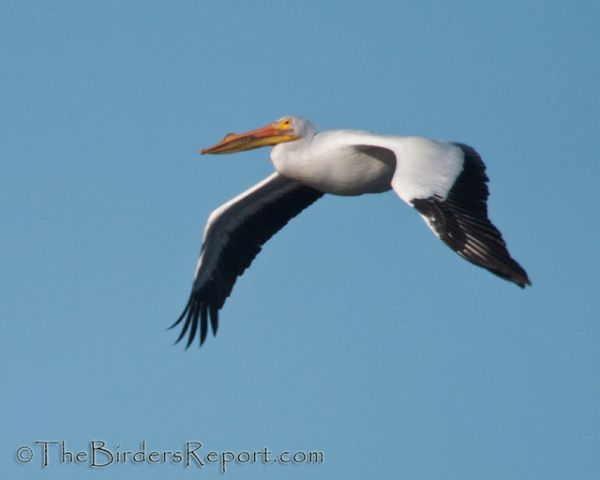
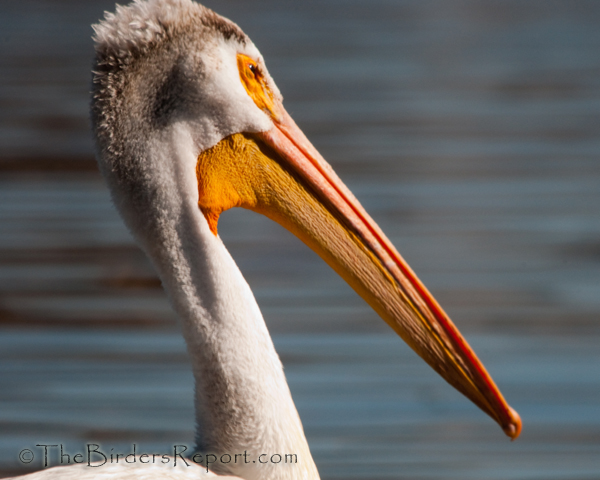
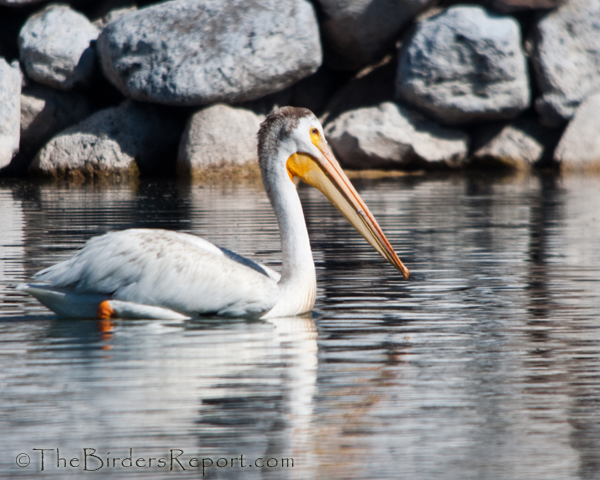
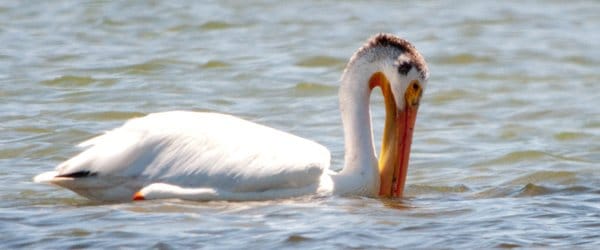
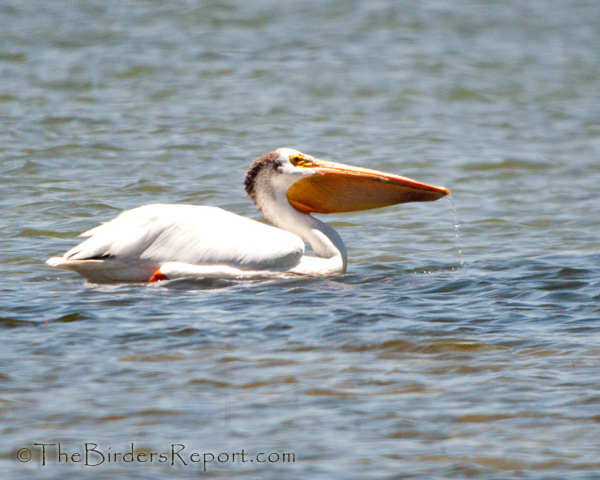
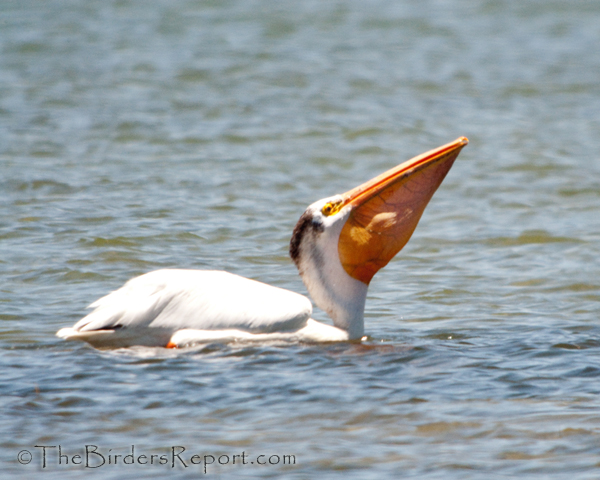
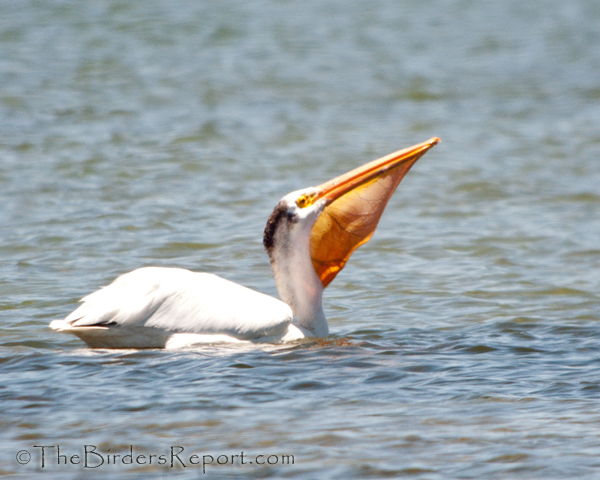
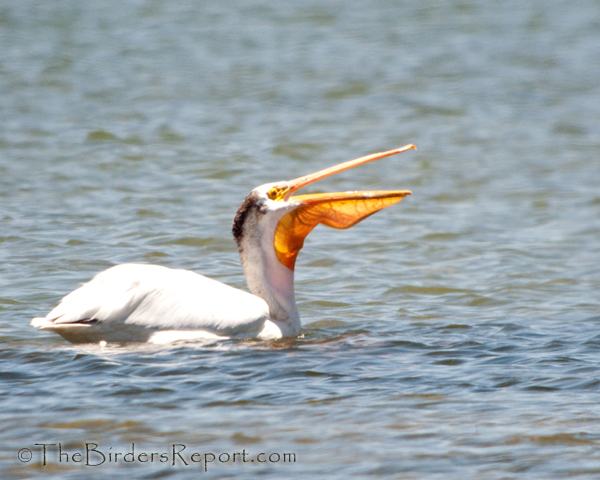











Awesome!
I can’t believe I just saw two America White Pelicans gliding in the sky above my home in the inland empire in Southern California. They were very large adults with the most beautiful white bodies and black wing tips. They were gliding so high in the open sky that I had to use binoculars to actually see their beauty. What a sight to see.